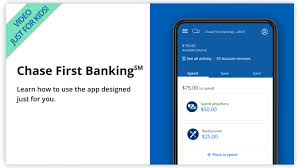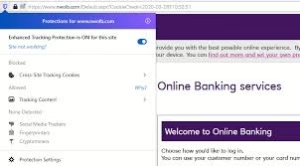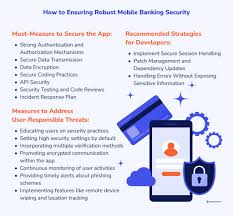A block explorer serves as a digital gateway to the world of blockchain. It functions like an online browser specifically designed for exploring and analysing blockchain networks. Users can check transaction histories, view wallet balances, and track the details of various cryptocurrencies.
Primarily associated with Bitcoin, many altcoins also have their specialised block explorers. People often turn to these platforms to access information about recent blocks added to the chain and the transactions processed within those blocks.
The concept of a Merkle tree is central to understanding how transactions are organised. This data structure compiles all transactions in a block into a single digital fingerprint, allowing users to verify whether specific transactions were included.

Each transaction provides detailed information such as timestamps, amounts, sender and receiver addresses, and confirmations. This transparency fosters trust among users by ensuring they can trace every transaction back to its origin, reinforcing the integrity of the entire network.
Block Explorers
Block explorers serve as vital tools for anyone navigating the intricate world of blockchain technology. Essentially, a block explorer is an online platform that allows users to view and investigate various aspects of a blockchain. With it, you can access detailed information about individual blocks, including their contents and timestamps, examine transaction histories, and check the balances associated with specific addresses.
Think of a block explorer as a search engine for cryptocurrency transactions. Just as web browsers allow you to browse the internet, block explorers enable you to delve into the fascinating world of digital currencies. Each cryptocurrency typically has its dedicated block explorer tailored to its blockchain.
For Bitcoin enthusiasts, several popular options are available. Websites like blockexplorer.com, blockchain.com, blockcypher.com, and btc.com offer user-friendly interfaces for exploring Bitcoin’s vast network. These platforms help users track transactions in real-time and gain deeper insights into the decentralised financial ecosystem. In summary, whether you’re monitoring your transactions or researching market trends, block explorers are indispensable tools in the realm of cryptocurrency.

Using block explorers is an excellent way to delve deeper into the Bitcoin blockchain. To access detailed information about specific blocks, users can click on the block feed link or enter a block height number directly in the search box. This will give them a comprehensive view of all transactions within that particular block.
Each transaction encompasses crucial details such as its transaction ID (TXID) and the Bitcoin addresses involved. By clicking on an individual transaction, users can discover how many bitcoins were transferred and identify both the sending and receiving addresses.
This level of transparency provides insight into the flow of funds within the network. Users can see not just the amounts transacted but also track patterns of activity over time. Overall, exploring blocks in this manner enriches one’s understanding of Bitcoin’s decentralised nature and transactional history.
Merkle trees and Merkle roots
Merkle trees and Merkle roots play a crucial role in the functioning of blockchain technologies, particularly in Bitcoin. A Merkle tree organises the multiple transactions within a block into a structured format that allows for efficient verification. Each transaction is hashed, forming the leaf nodes of the tree.
As the structure builds upwards, pairs of hashes are combined and rehashed until only one hash remains—known as the Merkle root. This single hash serves as a digital fingerprint summarising all transactions in that block. The use of double SHA-256 hashing enhances security, ensuring robust integrity of transaction data.
Named for its tree-like structure, a Merkle tree is binary; this means it typically requires an even number of leaf nodes. If there’s an odd number, an extra copy of the last hash may be used to balance it out. This hierarchical organisation simplifies the process for users who want to confirm whether specific transactions are included in a block without needing to review every individual entry. Overall, Merkle trees enhance both efficiency and transparency in blockchain systems.

Understanding how Merkle trees work is essential for grasping the efficiency of blockchain technology.
Imagine a block containing four transactions: A, B, C, and D. These transactions each generate their hash, which is then combined into a structure known as a Merkle tree. In this method, pairs of transaction hashes are hashed together iteratively until a single hash—the Merkle root—is produced.
One might think that concatenating all transaction IDs (TXIDs) and hashing them would create a unique identifier for the block. However, this approach requires access to all other TXIDs to verify whether a specific one belongs to that block.
The beauty of the Merkle tree lies in its efficiency. To confirm if a particular TXID is part of the block’s transactions, you only need to know specific hashes along the tree’s path rather than every single TXID.
This means that using the Merkle root as a fingerprint for the block header allows verification without an exhaustive search through all transactions contained within that block. Thus, Merkle trees streamline data integrity checks while enhancing privacy and security within blockchain networks.
Using block explorers opens up a world of interconnected information waiting to be discovered. Each piece of data visible on these platforms is intricately linked, allowing users to delve deeper into the blockchain’s story.

When exploring the transaction list, for instance, each transaction ID serves as a gateway to more detailed insights. Users can click on an ID and uncover a wealth of information about that specific transaction, including its block height—the point at which it was recorded on the blockchain—and the total number of confirmations it has received from the network.
Moreover, additional metrics are displayed alongside crucial details, offering context about the transaction’s activity. This seamless navigation encourages users to explore further; by clicking on associated wallet addresses, they can access comprehensive histories and current balances.
In doing so, users gain a holistic understanding of how funds move through the blockchain ecosystem and witness firsthand the vibrant activity taking place within this decentralised space. The interconnectedness of data transforms every exploration into a journey through the intricate layers of blockchain history.
Blockchain
Block explorers are essential tools in the world of blockchain and cryptocurrency. They embody the trustless and decentralised ethos that underpins these technologies. They provide a public ledger where anyone can verify transactions at any time, offering unparalleled transparency.
For those new to crypto or those diving into Web3 for the first time, block explorers can seem daunting. However, they are incredibly user-friendly interfaces that simplify the intricate details of transactions. Users can track everything from transaction histories to wallet balances with just a few clicks.
Seasoned traders also benefit significantly from these platforms. By analysing prior transactions, trends become apparent, helping inform future trading decisions. This clarity fosters confidence in a space that’s often characterised by uncertainty.
In essence, block explorers empower users across all experience levels. They turn complex data into accessible information, ensuring that transparency remains a cornerstone of blockchain technology. As you embark on your journey through crypto, embracing these tools is crucial for harnessing the full potential of this revolutionary landscape.
Using Maxthon Browser as a Block Explorer
1. Download and Install Maxthon
First, download the Maxthon browser from its official website. Follow the installation prompts to set it up on your device. Once installed, launch the browser.
2. Access a Block Explorer Website
In Maxthon’s address bar, enter the URL of a block explorer relevant to your cryptocurrency of interest (e.g., blockchain.info for Bitcoin). Hit Enter to navigate to the site.
3. Understanding Block Explorer Features
Familiarise yourself with the features of the block explorer. Typically, you can view blocks, transactions, wallet addresses, and network statistics here.
4. Searching for Transactions or Blocks
Use the search bar provided by the block explorer to find specific transactions or blocks by entering details like transaction ID or wallet address. Click Search to view results.
5. Analyzing Transaction Details
Once you’ve located a transaction, click on it to examine detailed information such as timestamps, confirmation status, fees, and involved addresses.

6. Explore Related Data
Some block explorers allow you to explore related data, such as pending transactions or current network hash rates. Take advantage of these features for deeper insights.
7. Bookmarking Important Pages
If you frequently visit certain sections of a block explorer, consider bookmarking those pages in Maxthon for quick access in the future.
8. Stay Updated with Plugins
Consider using any available extensions or plugins offered by Maxthon that enhance your browsing experience regarding cryptocurrencies and secure transactions.

9. Enhance Security Settings
Finally, check and adjust the security settings within Maxthon’s options menu to ensure a safer browsing experience while handling sensitive transaction information.

